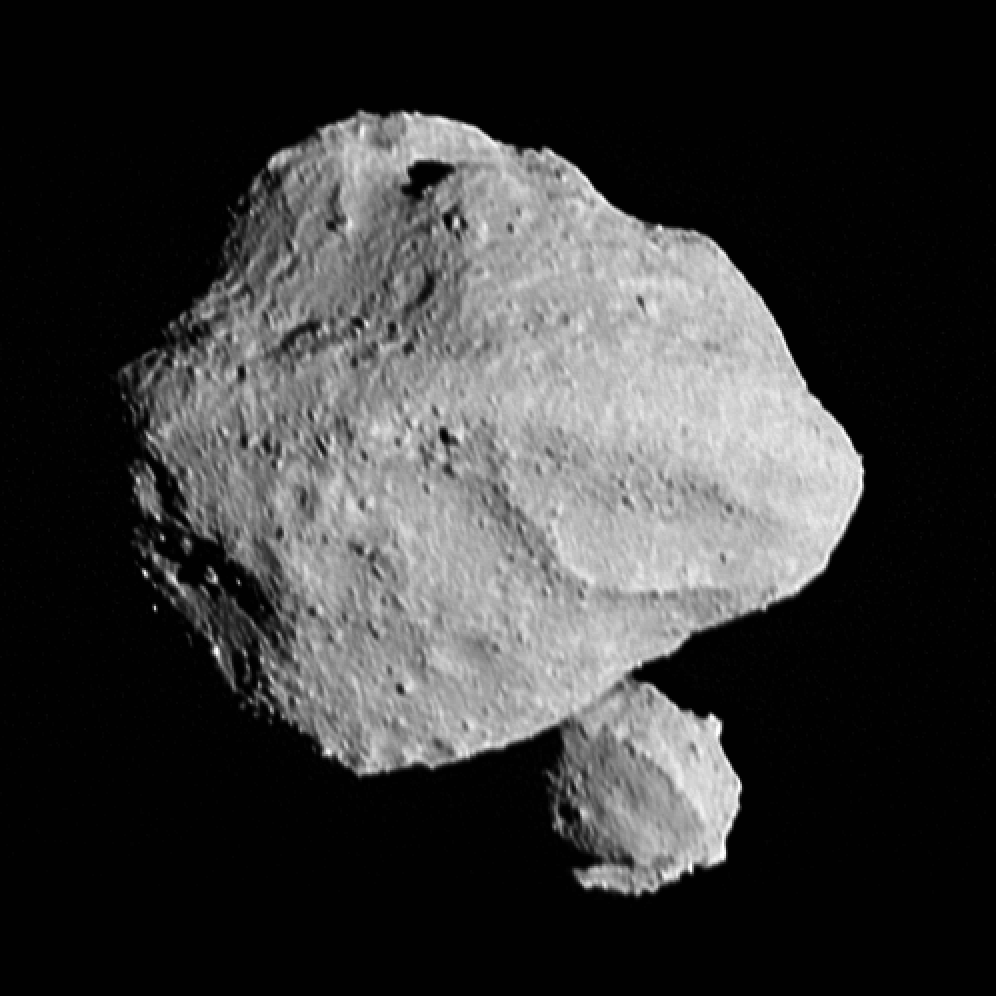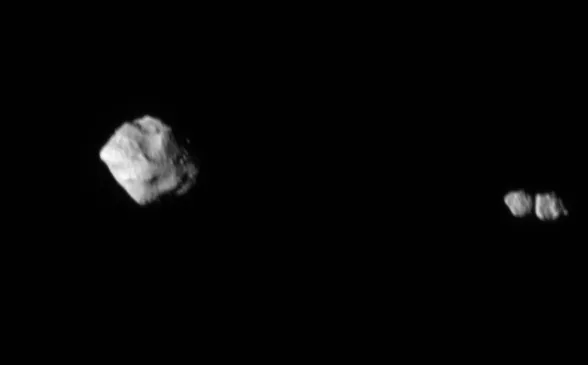Planetary scientists have concluded that the contact asteroid Selam, which is a moon of the asteroid Dinkinesh, was formed from matter ejected from its surface. This is stated in an article published in the journal Nature.

The orbit of the Dinkinesh asteroid passes in the Main Asteroid Belt. It was chosen as a “training” target for the Lucy mission after its launch. The engineers decided to use a small body to test the operation of the probe’s instruments and the effectiveness of its guidance system.
On November 1, 2023, Lucy flew over Dinkinesh. The rendezvous was a surprise. It turned out that Dinkinesh was a binary asteroid. It has a moon, called Selam. Its orbit passes at a distance of 3.1 km from Dinkinesh, while it is a contact body. This means that Selam consists of two parts, each of which was a separate celestial body in the past. But then they collided at low speed and merged into a single object. The diameters of the two halves of the Selam are 210 and 230 meters, while the diameter of the Dinkinesh is 720 meters.

Binary asteroids are not uncommon. However, Dinkinesh became the first studied asteroid which moon was a contact body. To uncover the mystery of its origin, the researchers carefully analyzed the pictures taken by Lucy. They managed to find a large depression and ridge on the surface of Dinkinesh. Scientists concluded that at some point it lost up to a quarter of its substance. Part subsequently settled on the surface, forming a ridge. And the other part remained in orbit and a pair of moons formed from it, which then collided and led to the birth of Selam.
As for the root cause of the release of the substance, it was most likely caused by the so-called YORP effect (the Yarkovsky–O’Keefe–Radzievskii–Paddack effect). It consists in the appearance of a weak reactive pulse due to thermal radiation from the surface of the asteroid, which warms up during the day and cools down at night, giving it additional acceleration. The YORP effect is able to spin a small asteroid so much that it literally begins to fall apart.
According to Nature


